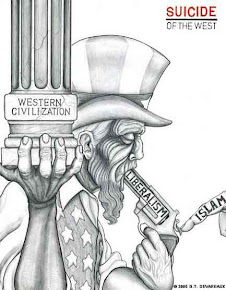Monday, November 29, 2010
Schools that serve
Tooley's observations and studies may have been in India, but the principle is the same as here in the US. When you are a private company and have to rely on the goodwill of your customers, you come up with a way to please, or in this case educate. If you are government with unlimited power of taxation, there is no necessity to please, as in this case to educate.
Excerpt: Then Tooley broke the rules. With guilt feelings and some spare time, he actually went into the slums instead of riding past them with his driver. He was surprised to see little handwritten signs announcing the existence of private schools: He thought private schools are for the rich. Guided through alleys and up narrow, dark, dirty staircases, he entered classrooms and found dedicated teachers and students.
Tooley found schools that survive not with government money or international bequests, but through $2-per-month fees paid by rickshaw pullers who scrimp and save to give their children a chance not to pull rickshaws. He went on to visit 50 Indian private schools in poor areas over the next 10 days. Did some foundation make them possible? No, these were for-profit schools created by poor but persevering entrepreneurs.
Tooley was astounded to see high motivation and better results than at the better-funded government schools. He then visited other private schools for the poor in cities and villages throughout India, Africa (Nigeria, Ghana, Kenya), and even China. In The Beautiful Tree (Cato, 2009), he describes how he regularly found government schools with better-paid but poorly motivated teachers, and private schools somehow surviving on very little income.
Tooley's crucial conclusions: "In these genuine markets, educational entrepreneurs respond to parental needs and requirements. . . . Their quality is higher than that of government schools provided for the poor." And his findings are not merely anecdotal. Governmental officials showed little interest in his findings, but a Templeton Foundation grant allowed him to create research teams that tested 24,000 fourth-graders from a variety of schools in India, China, Nigeria, and Ghana.
The result: Children in private schools scored 75 percent better than comparable students in government schools. You'd think this would excite other World Bank researchers—but like Darrow Miller, Hernando de Soto, and William Easterly (see "Don't be a Bepper," WORLD, Jan. 13, 2007), Tooley looks for bottom-up rather than top-down strategies, and that could put a lot of Big Economic Planners out of work.
The title of Tooley's book comes from his sense that parents don't need government officials to tell them what to do: A beautiful tree can grow without supervision from "development experts" who believe that poor children will be educated only if governments, with funding from rich nations, establish free, universal public schooling.
The better way: Poor parents pay teachers directly. Voucher plans "if done in the right way" can help, but that's a vital caveat, because it's easy to end up with good ideas killed via fraud and unintended market distortions. The essential strategy is this: If students don't learn, teachers don't eat.
Read full World Magazine article here.
Excerpt: Then Tooley broke the rules. With guilt feelings and some spare time, he actually went into the slums instead of riding past them with his driver. He was surprised to see little handwritten signs announcing the existence of private schools: He thought private schools are for the rich. Guided through alleys and up narrow, dark, dirty staircases, he entered classrooms and found dedicated teachers and students.
Tooley found schools that survive not with government money or international bequests, but through $2-per-month fees paid by rickshaw pullers who scrimp and save to give their children a chance not to pull rickshaws. He went on to visit 50 Indian private schools in poor areas over the next 10 days. Did some foundation make them possible? No, these were for-profit schools created by poor but persevering entrepreneurs.
Tooley was astounded to see high motivation and better results than at the better-funded government schools. He then visited other private schools for the poor in cities and villages throughout India, Africa (Nigeria, Ghana, Kenya), and even China. In The Beautiful Tree (Cato, 2009), he describes how he regularly found government schools with better-paid but poorly motivated teachers, and private schools somehow surviving on very little income.
Tooley's crucial conclusions: "In these genuine markets, educational entrepreneurs respond to parental needs and requirements. . . . Their quality is higher than that of government schools provided for the poor." And his findings are not merely anecdotal. Governmental officials showed little interest in his findings, but a Templeton Foundation grant allowed him to create research teams that tested 24,000 fourth-graders from a variety of schools in India, China, Nigeria, and Ghana.
The result: Children in private schools scored 75 percent better than comparable students in government schools. You'd think this would excite other World Bank researchers—but like Darrow Miller, Hernando de Soto, and William Easterly (see "Don't be a Bepper," WORLD, Jan. 13, 2007), Tooley looks for bottom-up rather than top-down strategies, and that could put a lot of Big Economic Planners out of work.
The title of Tooley's book comes from his sense that parents don't need government officials to tell them what to do: A beautiful tree can grow without supervision from "development experts" who believe that poor children will be educated only if governments, with funding from rich nations, establish free, universal public schooling.
The better way: Poor parents pay teachers directly. Voucher plans "if done in the right way" can help, but that's a vital caveat, because it's easy to end up with good ideas killed via fraud and unintended market distortions. The essential strategy is this: If students don't learn, teachers don't eat.
Read full World Magazine article here.
Labels:
Big Government,
education
Subscribe to:
Post Comments (Atom)






























No comments:
Post a Comment